To buy enough 20 boxes of banh troi and banh chay for her family and office on the Cold Food Festival (March 3 of the lunar calendar), Tuyet Mai had to line up at the market from early morning.
The 32-year-old woman in Cau Giay District, Hanoi, said that Dich Vong Market near her house has more than a dozen shops selling ready-made banh troi and banh chay, but she still accepts to wait 15 minutes to buy hot banh troi from her familiar shop because she trusts the quality and food safety. "If I only buy for my family, it's fast, but now I'm buying for my colleagues, so I try to wait. I thought that if I go early, there would be fewer buyers, but it turns out there are many because everyone thinks like me," Mai said.
Not wanting to buy things at the market, Ms. Hong Tham, in Co Nhue, Bac Tu Liem district, ordered two kilos of flour with bean paste and sugar for 60,000 VND the previous afternoon to make banh troi and banh chay with her neighbors.
The 40-year-old woman said that in previous years, she would buy a kilo to make it herself, but she couldn’t finish it and had to leave it unfinished. This year, she invited her neighbors to help her make it, which was both economical and fun, and later she would have a plate of cake to offer to her ancestors.
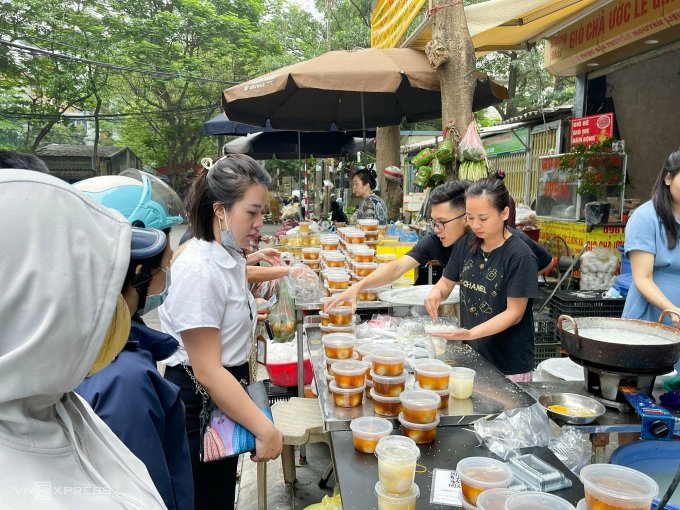
People line up to buy ready-made banh troi and banh chay at Dich Vong market, Cau Giay district, on the morning of April 11. Photo: Quynh Nguyen
Instead of eating sticky rice or pho, Quoc Tuan, 20 years old, in Cau Dien ward, Nam Tu Liem district, today bought banh troi and banh chay for breakfast. This is a habit of the Hung Yen native every time the Cold Food Festival comes because his grandmother and mother used to make this type of cake when he was a child. The only difference, according to Tuan, is that in his hometown, banh troi is usually placed on jackfruit leaves, the number of balls depends on the size of the leaves. In Hanoi, the cakes are arranged in boxes or plastic plates, with 10-15 balls of sugar filling.
"I only eat it once a year so it always tastes as delicious as when I was a kid," Tuan said.
On the morning of April 11, at traditional markets in Cau Giay, Nam Tu Liem, Bac Tu Liem, Thanh Xuan districts, the number of shops selling banh troi and banh chay increased dramatically. On average, each market has 10-20 points of sale, with prices of 10,000-30,000 VND per box, and homemade dough alone costs 25,000-30,000 VND per kg with fillings. In addition to stalls opened specifically for this day, many small traders who usually sell fruits, ham, sticky rice, bread, etc. also sell them today to increase their income.
Ms. Nguyen Thi Lua, 60 years old, from Ung Hoa district, usually sells fruit at the gate of My Dinh market, Nam Tu Liem district, but for the past two days she has switched to selling sticky rice flour and banh troi and banh chay. "To prepare enough cakes, I have to start working from 11pm the night before, and mobilize some students from the same boarding house to help so that I can sell them by 5am," Ms. Lua said. She said that in just four hours, she sold more than 200 boxes of banh troi and banh chay, not including the flour she sold to take home. The total amount of flour Ms. Lua prepared for this year's Cold Food Festival is nearly 200 kg, nearly double last year's.
At the gate of Dich Vong market, Cau Giay district, in addition to the shops that prepare the cakes the night before, many vendors have to hire extra workers to process them on the spot. A vendor said that this year's purchasing power has increased, most concentrated before 9am. There were times when they couldn't make it in time, and customers came and saw the long queue, got bored of waiting and went to another shop.
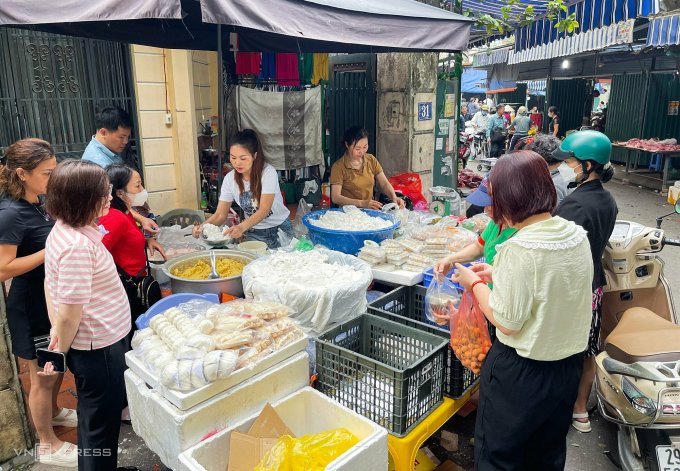
A stall selling vegetarian banh troi at a traditional market on Nguyen Phong Sac Street, Cau Giay District, on the morning of April 11. Photo: Hai Hien
Not only selling directly, many online businesses also recorded an increase in demand for homemade flour or pre-made cakes in 2023.
Ms. Han Huong Thuy, an online seller in Long Bien district, said that the number of customers ordering sets of five-color banh troi and banh chay, shaped like lotus flowers, animals, etc., doubled last year. In addition to traditional cakes, she also makes five-color powder from natural fruits, without artificial colors.
Bui Minh, an online trader in Cau Dien ward, Nam Tu Liem district, said this is the second year he has sold flour to make banh troi and banh chay because he saw high demand. Unlike other flours in the market, Minh's five-color flour, which includes sugar, sesame, and mung beans, costs up to VND110,000 per kilo.
"Despite the high price, I still sold nearly 40 orders on this occasion because many people like to create colorful cakes instead of just the traditional white one. I think modern or traditional is not important, the core is to preserve the beauty from our ancestors' time," said Ms. Minh.
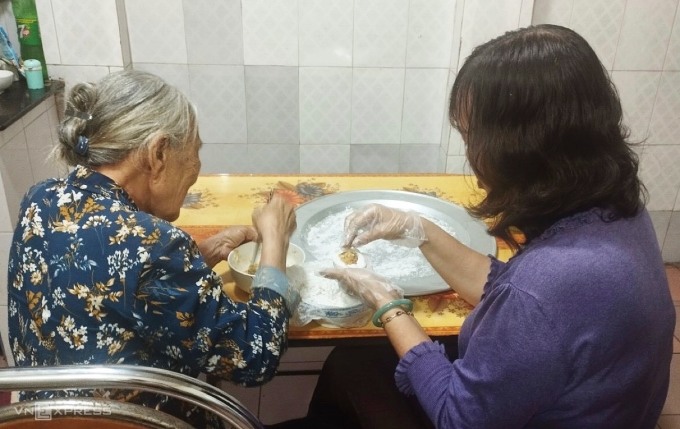
Ms. Hong Tham, in Co Nhue, Bac Tu Liem district, since the afternoon of April 10, has ordered two kilos of flour with bean paste and sugar to make banh troi and banh chay with her neighbors. Photo: Provided by the character
Cultural researcher Pham Dinh Hai, Vietnam Union of Friendship Organizations , said that Cold Food Festival existed before the Spring and Autumn period in China, and was celebrated annually like Lunar New Year. This day is essentially an annual grand ceremony, established as a national festival with diverse and rich official worship activities and festivals. Cold Food Festival, like Lunar New Year, expresses gratitude to the gods (earth god, grain god), filial piety to ancestors, and respect for the spirit of valuing righteousness over money, and disregarding fame and profit of the ancients.
According to Mr. Hai, "Cold Food" means eating cold food, ready-made food, originating from the ancient people's custom of "fire reform", also known as "Camp Yen" (forbidden smoke and fire), "Lến Tiết" or "Bạch Ngũ Lệnh"... Historical documents show that the time from putting out the old fire (forbidden fire) to making a new fire is three, five or seven days. Every family must prepare food and drink during this time because they are not allowed to light a fire or cook, so it is called "Cold Food". According to the Xia Dynasty calendar, the Cold Food Festival is held 105 days after the Winter Solstice and one or two days before the Qingming Festival, using only ready-made (cold) food, not clearly stating whether the offering is vegetarian or non-vegetarian; no incense, lamps, votive paper... because fire is not allowed.
Thus, the Cold Food Festival can prepare the same offerings as the Lunar New Year, Shangyuan (Full Moon Festival in January), Qingming, Mid-Autumn Festival... but should have banh troi and banh chay because these are the main offerings, symbolic. The worship ritual is the same as for worshiping gods, Buddhas, ancestors...
According to the expert, offerings should be prepared according to the family's conditions and based on traditional customs, and should not be displayed wastefully. The most important requirements in worship ceremonies are sincerity, seriousness, and solemn and respectful rites.
"One of the important values of festivals and worship activities is the educational value. When parents are solemn and respectful in expressing gratitude to heaven, earth, gods, and ancestors, their children will also follow suit and be filial to their parents, love and care for their family and relatives; and be faithful to their teachers and friends...", Mr. Hai said.
Hai Hien-Quynh Nguyen
Source


![[Photo] A delegation of 100 journalists from the Vietnam Journalists Association visits the soldiers and people of Truong Sa island district.](https://vphoto.vietnam.vn/thumb/1200x675/vietnam/resource/IMAGE/2025/5/30/0984a986227d4e988177f560d2e1563e)

![[Photo] Journalists moved to tears at the Memorial Service for the soldiers who died in Gac Ma](https://vphoto.vietnam.vn/thumb/1200x675/vietnam/resource/IMAGE/2025/5/30/9454613a55c54c16bf8c0efa51883456)

![[Photo] National Conference "100 years of Vietnamese Revolutionary Press accompanying the glorious cause of the Party and the nation"](https://vphoto.vietnam.vn/thumb/1200x675/vietnam/resource/IMAGE/2025/5/30/1cf6cd5c8a934ebfa347028dcb08358c)
![[Photo] General Secretary To Lam receives Chief of the Central Office of the Lao People's Revolutionary Party](https://vphoto.vietnam.vn/thumb/1200x675/vietnam/resource/IMAGE/2025/5/30/140435f4b39d4599a3d17975dfb444c5)


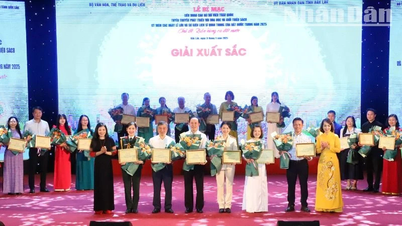

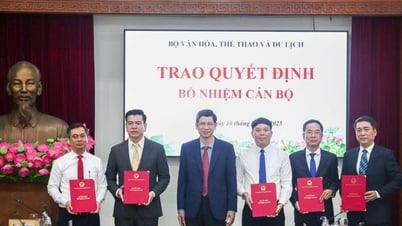
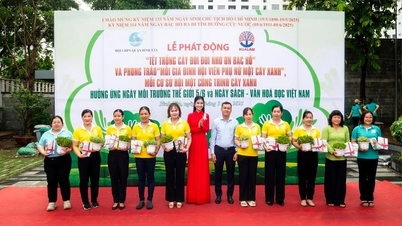
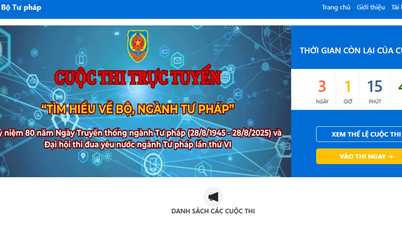

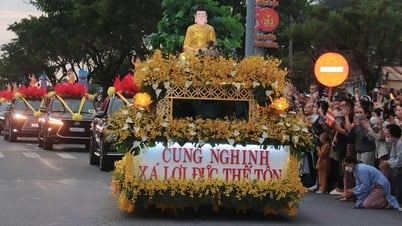

























































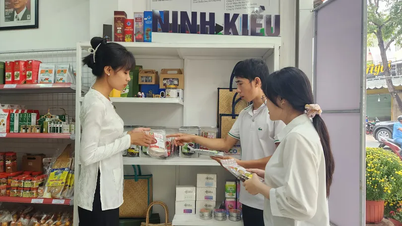


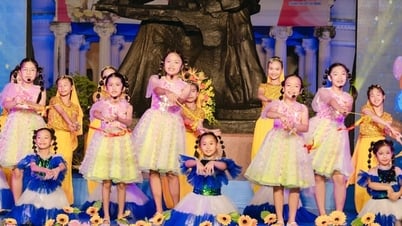












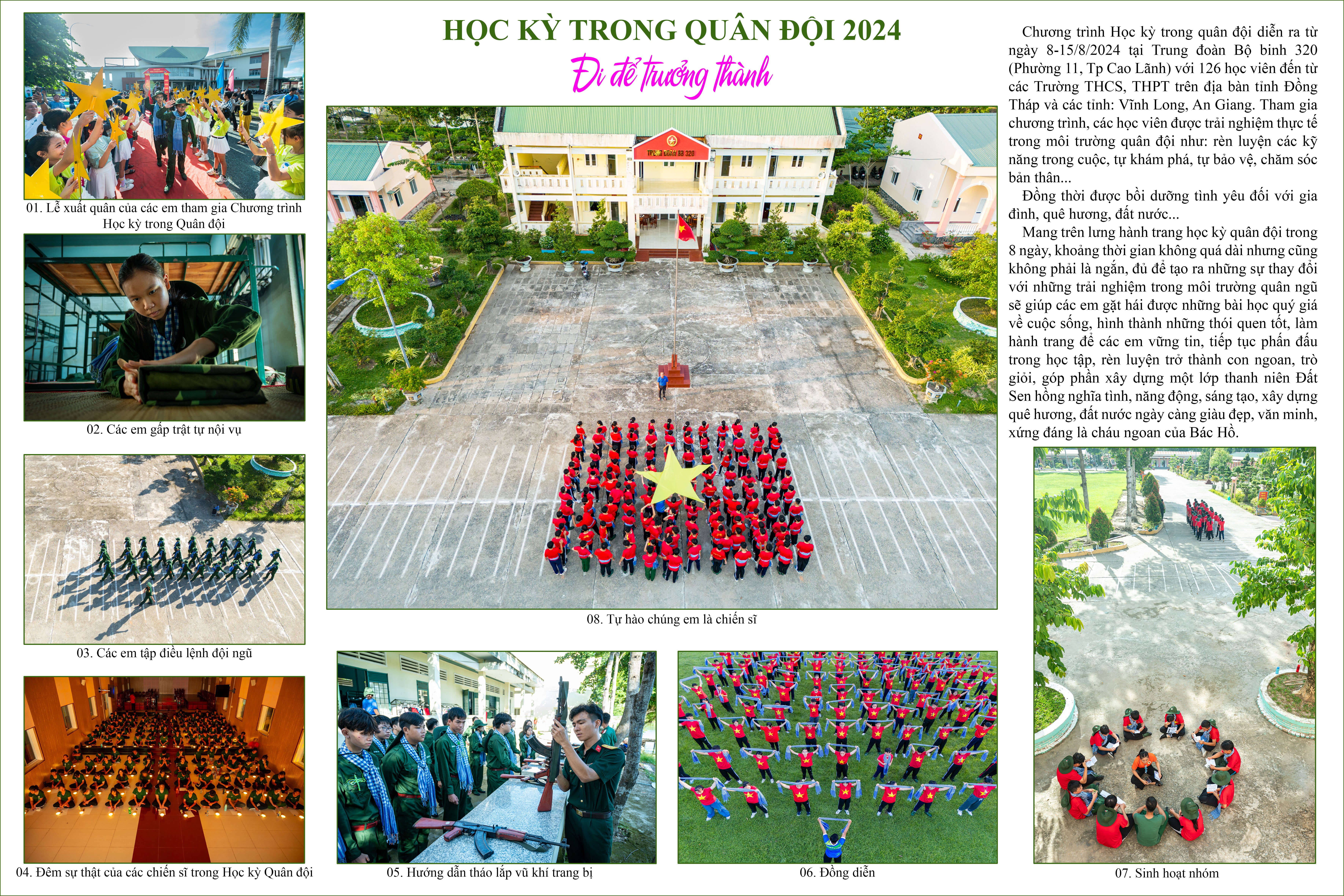



Comment (0)